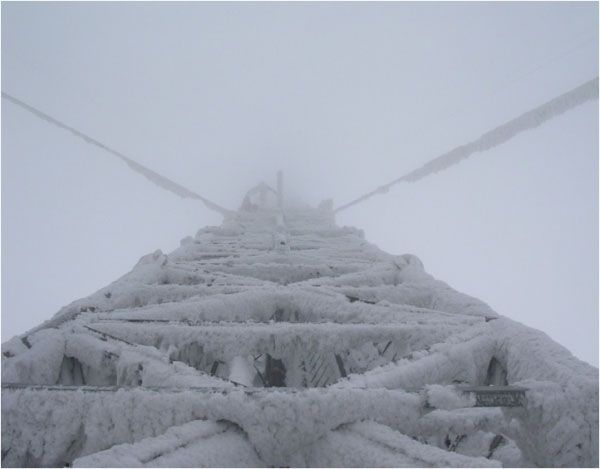Communication Masts
All outdoor structures will be subjected to forces of nature that are important to consider. Loads applied to structures by rough weather conditions are called climate loads. Tall masts such as telecomunication masts are subjected to wind forces and, in cold climate, also icing. It is therefore important to dimension a telecommunication mast to withstand the expected extreme loads caused by wind and ice.
Many telecommunication masts are located on exposed mountains and ridges where the wind is strong and cold cloud droplets can freeze on the construction resulting in large ice loads. The guys, lattice elements, antennas and other structural components may collect ice. The combination of ice and strong winds results in high loads. In addition falling ice poses a safety issue in the area surrounding the mast.

Icing on an important telecommunication mast in Norway. Photo: Hans O Slora.
Kjeller Vindteknikk can perform extreme wind analysis, icing analysis, combined analysis of strong winds and ice, as well as analysis of the risk associated with ice fall around the mast. International standards for ice and wind are used, together with local weather measurements, and data from the WRF model (Weather Research and Forecasting model).
Kjeller Vindteknikk have built over 200 wind measurement masts and calculated the associated climate loads. We also have a long track record on calculating the climate loads for telecommunication masts in Norway and Sweden.